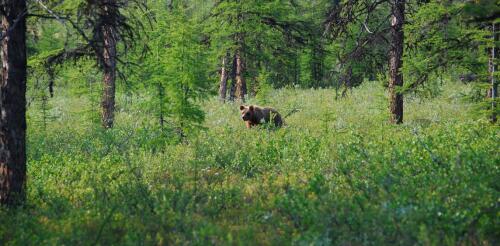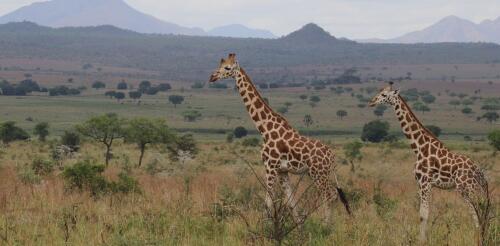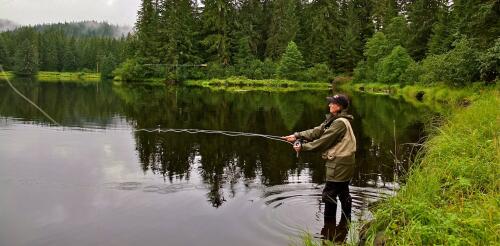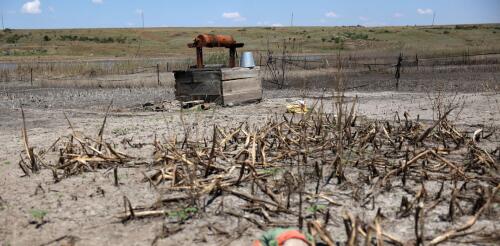Wildlife
At hundreds of wildlife rehabilitation centers across the U.S., people can learn about wild animals and birds at close range. These sites, which may be run by nonprofits or universities, often feature engaging exhibits, including “ambassador” animals that can’t be released – an owl with a damaged wing, for example, or a fox that was found as a kit and became accustomed to being fed by humans. What’s less visible are the patients – sick and injured wild animals that have been admitted for treatment. Each year, people bring hundreds of thousands of sick and injured wild animals to wildlife rehab centers. Someone may find an injured squirrel on the side of the road or notice a robin in their backyard that can’t fly, and then call the center to pick up an animal in distress. We study ecology and biology, and recently used newly digitized records from wildlife rehabilitation centers to identify the human activities that are most harmful to...
Earth’s boreal forests circle our planet’s far northern reaches, just south of the Arctic’s treeless tundra. If the planet wears an Arctic ice cap, then the boreal forests are a loose-knit headband wrapped around its ears, covering large portions of Alaska, Canada, Scandinavia and Siberia. The boreal region’s soils have long buffered the planet against warming by storing huge quantities of carbon and keeping it out of the atmosphere. Its remoteness has historically protected its forests and wetlands from extensive human impact. These two traits rank boreal forests among the most important ecosystems on Earth. In addition, numerous species of mammals, fish, plants, insects and birds make these forests home. For over two centuries, scientists have recognized that climate plays a key role in determining the geographic zones of plant communities. Because boreal forests and soils face subzero winters and short summers, these forests and the animals that li...
Nearly 6,000 years ago, our ancestors climbed arid rocky outcrops in what is now the Nigerian Sahara and carved spectacularly intricate, larger-than-life renditions of giraffes into the exposed sandstone. The remarkably detailed Dabous giraffe rock art petroglyphs are among many ancient petroglyphs featuring giraffes across Africa – a testament to early humans’ fascination with these unique creatures. We are still captivated by giraffes today, but many of these animals are at risk, largely due to habitat loss and illegal hunting. Some are critically endangered. To understand how giraffes are faring across Africa, conservation ecologists like me are studying how they interact with their habitats across vast geographic scales. We use space-age technology and advanced statistical approaches that our ancient ancestors could have scarcely imagined to understand how giraffes can better coexist with people. Giraffes are featured...
Summer and fall are prime times for getting outdoors across the U.S. According to an annual survey produced by the outdoor industry, 55% of Americans age 6 and up participated in some kind of outdoor recreation in 2022, and that number is on the rise. However, the activities they choose are shifting. Over the past century, participation has declined in some activities, such as hunting, and increased in others, like bird-watching. These shifts reflect many factors, including demographic trends and urbanization. But outdoor activities also have their own cultures, which can powerfully affect how participants think about nature. As scholars who think about organizational theory, management and entrepreneurship, we are interested in understanding effective ways to promote social change. In a recent study, we analyzed the work of the nonprofit group Trout Unlimited, which centers on protecting rivers and streams across the U.S. that harbor wild and native trout and salmon. We f...
When an explosion breached the Kakhovka Dam in Ukraine on June 6, 2023, much analysis focused on near-term impacts, including the flooding of the city of Kherson, threats to the Zaporizhzhia Nuclear Power Plant and consequences for Ukrainian military forces’ expected spring offensive against Russian troops. But the most severe long-term effects will fall on Southeast Ukraine’s farmers. Villages there were flooded. Roads, train tracks and irrigation canals were washed away. Crops in fields and orchards in the Kherson and Zaporizhzhia region were inundated, then left to shrivel after the water drained. The long-term ecological disaster will unfold over decades to come. Crimea, once a region known for its sunny beaches and rice fields, could dry up without irrigation. We are a U.S. political scientist with research expertise on the post-Soviet region and a Ukrainian economist who studies agriculture. While the long-term effects of the dam break are difficult to calcu...




